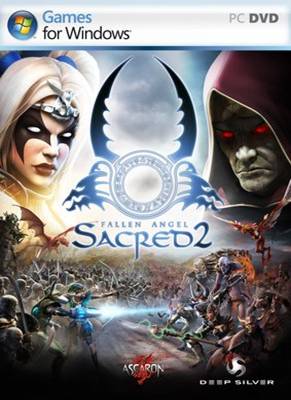Sacred 2: Fallen Angel Interview
-
Category: InterviewsHits: 4480

Article Index
Page 1 of 2
Having sold over 1.8 million copies, Ascaron Entertainment's Sacred is one of the most successful action RPGs ever released. Because of this success, it really comes as no surprise that the team is currently hard at work on a sequel. To get a better idea of what Sacred 2: Fallen Angel will have to offer over its predecessor, we spoke with creative director Hans-Arno Wegner:GB: What were your primary design goals with Sacred 2: Fallen Angel? What areas of the original game did you feel needed to be improved or expanded upon in the sequel?
Hans: We want to create an even more beautiful and living world. This was the reason why we changed to a full 3D engine with full physics support in order to create the atmosphere we want to have for the title. We wanted the world to be authentic and elaborate and feature intricate details. We have had a lot of ideas from working with the original Sacred and Sacred Underworld that we want to realize in the sequel. There were definitely some areas we wanted to improve. One of these points had been fighting from the mounts, which we improved greatly. In fact, we made several improvements. We optimized the whole battle system and the character development, and we improved the enemy and NPC AI.
GB: What can we expect from the engine powering Sacred 2? Will the game support DirectX 10, widescreen resolutions, and all other graphical features one would expect from a modern game?
Hans: Yes. Furthermore, our engine allows the player to play the game with NO loading screens while playing. This was one of the main reasons why we wrote our own engine, as no other engine would meet our requirements.
GB: Tell us about character creation and advancement in Sacred 2. How have you expanded upon the limited choices we had at our disposal when creating a character in the original Sacred?
Hans: As in the original Sacred, we believe in providing strong archetypes the player can choose from. The characters are not blank templates or chameleons, but individuals with a background in the world, each with their own motivation and personality. This gives us the opportunity to give each of them a voice, a demeanour, and abilities that create a real character. Besides choosing a character depending on their preferred playing style, the player has to make several decisions: what kind of path will he follow on his way through Ancaria? Will he follow the path of light and save the world like a real hero, or will he follow the shadow path to amass his own power? The player has to choose a god at the beginning of the game, and the chosen god grants him a unique special ability.
GB: Between Sacred, Sacred Plus, and Sacred Underworld, players had a lot of ground to cover. How does the size of the world in Sacred 2 compare to what we saw in the first game and its expansions?
Hans: The free exploration of the world is an important part of Sacred. The fact that Sacred 2 is now totally 3D also affects the size of the world--unlike in the original Sacred, the player can now look behind every tree, building, mountain, and so on. Thus, the size of the actual world to explore is expanded greatly. The world size of Sacred 2 is more than 1.5 times bigger than the original Sacred with all expansions, and this doesn't even include all the dungeons that now build an additional level under the whole world. You can reach every place you see in Ancaria.
GB: Tell us about some of the new environments players will travel through during the sequel. Any favorite areas or cities you'd care to elaborate on?
Hans: The whole world of Sacred 2 is totally new because it is set 2000 years before the original Sacred. The player can meet the early humans and orc towns. It is the time when the story began, and there is a lot more to see and discover. I personally like the new kobolds and the beautiful unique elven high culture, built with magical power. The huge capital city of the elves is joy to visit! It is planned by an actual urban planner to be structured like a real town and to represent the political structure of this society.


